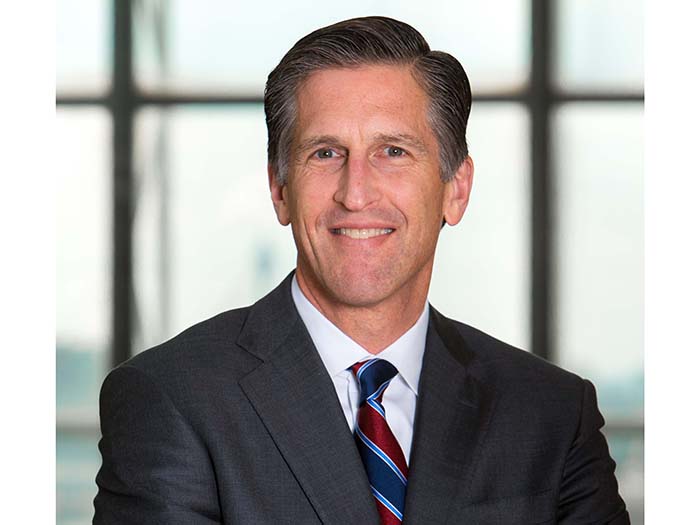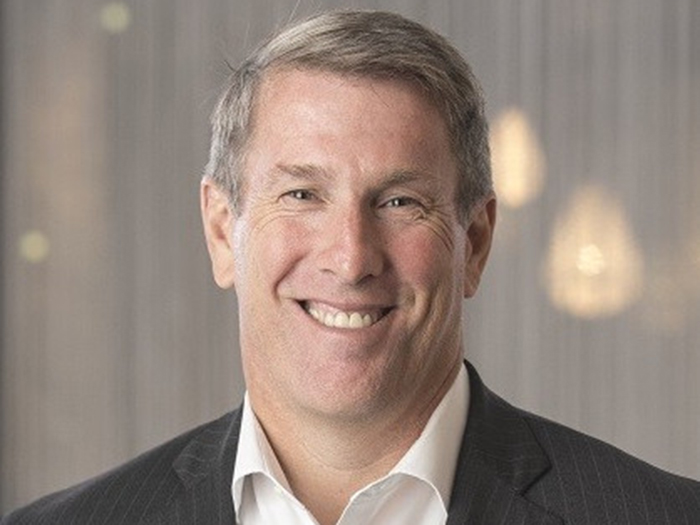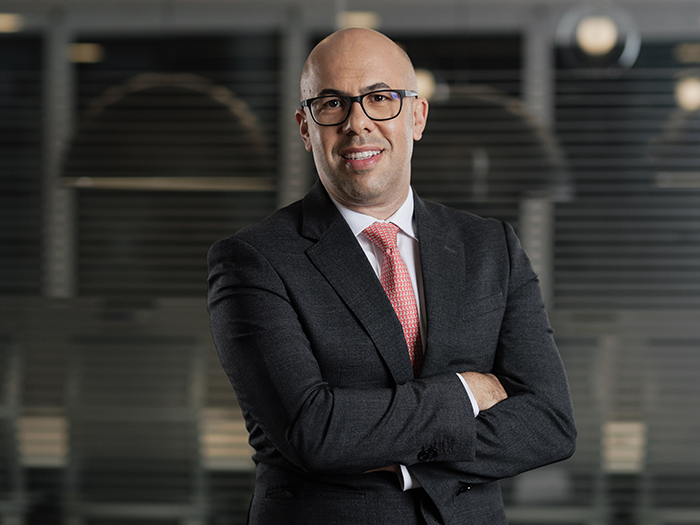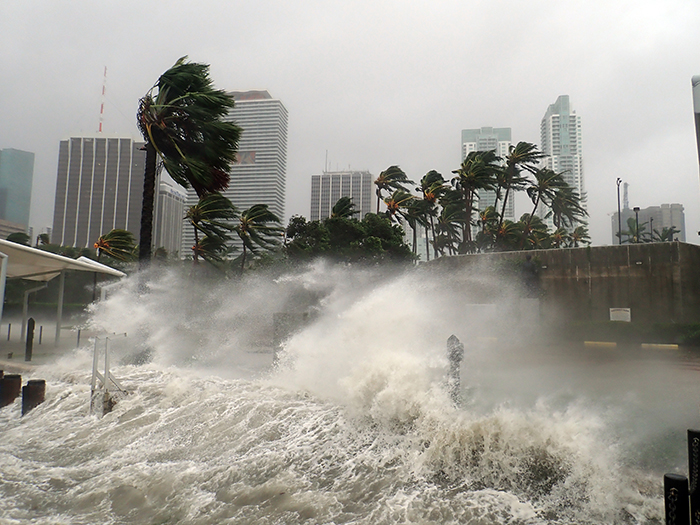Lloyd’s Head of Americas Hank Watkins Talks Climate Change, ESG, Cyber Risk and More

In April, as he has on a number of occasions, Hank Watkins, head of the Americas for Lloyd’s, made himself available to Risk & Insurance® for an interview. The interview touched on a number of topics and has been edited for clarity and length.
Risk & Insurance: Well, it’s good to see you again, Hank. Just to start things off, what kind of initiatives or challenges are you really excited about this year?
Hank Watkins: Well, as we consider the tragedy that’s gone on in our world over the past year, it goes without saying it has been an exceptionally challenging period for people and economies around the world, for the insurance industry and for us at Lloyd’s.
Against the challenging backdrop, I’m encouraged by the way the industry has responded. We have shown we can withstand the effects of an unexpected and unprecedented global disaster, learn quickly from what has taken place and adapt to sustain our operational and financial performance.
You’ve seen improvements in many of the public broker and insurer earnings reports during the first half of the year, much of that driven by improvements in the overall economy, a re-alignment of insurance pricing to reflect recent loss experience and available capacity and increased awareness in our communities of the value a properly-structured risk management program can deliver to individuals, businesses and public entities.
Working with our distribution partners, who play an important role in the process of attaching insurer capital to the risks faced by their clients, we can do a better job of ensuring that all customers – from individuals and small business owners to middle market and large corporates – fully understand the risk transfer products we provide at the time of a loss.
The pandemic has demonstrated the need for insurance buyers to take responsibility for their risk identification and transfer decisions as well. It takes more than assuming you’re “in good hands” to be confident that the purchased insurance will perform when it’s needed.
So one of the biggest opportunities for us as an industry is to better explain to our customers what risk transfer options are available to them and help them to rethink risk assessment. Because we all know that after this is over and we’re back to better times, people aren’t going to think about it as much.
R&I: When you talk about policy wording, Hank, and you mentioned business interruption briefly, is that an area where simpler policy wording or clearer policy wording can be a help? Because we saw a lot of friction around that, didn’t we?
HW: We did, and as I mentioned earlier, both Lloyd’s and the broader insurance industry are working to address this issue. One potential solution in support of faster payments is parametric insurance.
We’re seeing a lot more interest in this area because it relies on the occurrence of a pre-defined event which, when verified by an independent third party, triggers payment without the claim adjustment process inherent in traditional insurance policies.
The parametric product has evolved from responding to weather-related events to protecting against changes in temperature in climate-controlled shipments, earthquakes and active assailant incidents in shopping malls. It also reduces the needs of faster claims payments based [on] a trigger.
There’s an ongoing conversation about the role parametric insurance might play in future pandemics, particularly for the industries most-impacted by COVID-19.
R&I: So is it the revenue that’s the trigger, Hank, as you think about a trigger for pandemic?
HW: Revenue loss is one trigger, or it could be an organization like the World Health Organization calling it a pandemic.
There typically has to be a third party, whether it be NOAA for weather events or the U.S. Geological Survey for earthquakes. It’s got to be a third party that’s independent, that’s recognized as a global resource on a particular risk or industry. So in this case, the World Health Organization would have to declare a pandemic for a parametric insurance policy to respond.
The insurance industry is interested in these types of innovative policies because they simplify the claims process, deliver more quickly on the promise to pay and, ultimately, encourage broader take up of coverage as existing and potential customers experience more favorable outcomes than may have been the case with traditional insurance products.
R&I: Thinking more about challenges, you mentioned cyber as well, Hank. There was a lot of appetite for cyber with the carriers. There’s been some losses coming in, that appetite’s changing. We wanted to get your perspective on that particular risk.
HW: When you talk about challenges, systemic risk is the clear challenge going forward. Whether it’s cyber, the next pandemic or the expanding risks associated with climate change, all have the potential to disrupt the local, national and global supply chains we’ve come to rely on.
But from the cyber perspective, if you listen to any CEO, irrespective of industry, they now classify Cyber as their number one concern. Public or private sector, it doesn’t matter, nobody’s immune to this, and it concerns everyone.
From an insurance perspective, when cyber coverage was first introduced in the mid-1990’s, completing an application was very time consuming.
Coverage was relatively basic, there was minimal upfront loss mitigation and most attacks were against websites by individuals seeking to make a political statement. Fast forward and carriers routinely offer loss prevention services intended to enhance their policyholder’s defense while providing some level of confidence in the recovery timeline should an attack succeed.
As the motivation of cyber criminals has evolved from political to financial gain or for purely disruptive purposes, the industry’s appetite for risk, will adjust as needed to manage potential solvency impacts while still providing risk mitigation and transfer solutions to this top-of-mind threat.
R&I: There’s another issue facing insurance companies. And we all talk about it a lot, but it’s relevant, it’s talent. And we’re curious about Lloyd’s North America and just how you’re building your team there, if there are any initiatives you can point to.
HW: I know Risk & Insurance understand Lloyd’s, but for those who may not, I work for the Corporation of Lloyd’s. The Corporation provides the platform from which 90+ syndicates write insurance and reinsurance around the world.
We oversee the business planning process, set capital requirements of the syndicates, maintain licenses in more than 190 countries, provide market development, government affairs and regulatory affairs support, maintain rating agency relationships, provide accounting and settlement services, develop thought leadership research and reports, and manage the Central Fund.
When it comes to developing talent, while our relatively small team and need for experience in most roles limits opportunities for new entrants, we established an internship program two years ago that provides two university students per year with an opportunity to learn about Lloyd’s and the market’s role in the U.S. while sharing next-gen insights, which we’re always happy to receive!
In London, Lloyd’s has run apprenticeship and internship programs for decades to encourage high school and university aged students to consider a career in EC3, the zip code that’s home to more than 25,000 insurance industry professionals.
R&I: People talk about differentiation. What makes you different as a talent attractor? How do you think Lloyd’s works that way in the U.S.? Is it a positive or is it a challenge?
HW: Lloyd’s has been writing business in the US for over 125 years. In 1906, immediately following the San Francisco earthquake and fire, prominent Lloyd’s underwriter Cuthbert Heath instructed his local claims adjusters to pay all policyholder claims, irrespective of policy terms.
Fast forward to 2020, surplus lines carriers wrote more than $50 billion in premium across multiple industries, many of them new, innovative businesses without the track record, risk profile or loss experience preferred by standard market insurers.
Prior to closure of the Lloyd’s building in April 2020, you’d have seen the iconic “boxes” in the Underwriting Room, where underwriters representing their syndicates met each day with brokers, risk managers and other stakeholders in the broking process.
Multiple syndicates writing specific classes of business, marine & energy as an example, would be visited by brokers looking to place their client’s business at the most favorable terms and pricing.
Once the “lead” underwriter had proposed terms and pricing of their initial share, other syndicates would typically follow with the percentage they’re comfortable with until 100% of the placement was completed. Claims submitted under the policy are paid by each underwriter according to their participation on the risk.
While much of this is now being done virtually, as healthier times return, the Underwriting Room will resume its place as the central meeting place in London for industry professionals seeking and providing specialty solutions to the world’s risks.
R&I: We saw today reports of a new peak in Insurtech investing. Can you speak to your operation and how much you’re, not a dollar figure per say, but to what degree you’re investing, how you’re viewing Insurtech and its advantages?
HW: So Insurtech is an industry model. I think it’s brilliant. It’s fascinating. We don’t view it as a disruption to us because they thrive on the innovation our industry needs. When professionals succeed in raising awareness of and easing access to risk transfer products, in the process encouraging more individuals and businesses to protect themselves from insurable risks, we’ve all contributed to the solution.
R&I: We talked about the pandemic and business interruption, which was a big one. Cyber is a big one, ongoing. As you look at the world now, is there a third or fourth risk that you would say, okay, insurers, you really need to have your eye on this one?
HW: Well, I talked about supply chain as an inevitable outcome of systemic risk. We’re all going to be affected by it. That’s the global market we’re living in, better choices for consumers can be a positive thing.
So it would be supply chain, cyber, and the impacts of climate change. 30% of our global premium is insuring property (that’s a round number). And a lot of that’s exposed to natural catastrophe.
So as climate change impacts how close the water is to people’s homes, or how strong tornadoes are, how powerful wildfires are, that directly impacts Lloyd’s and many of our industry competitors and partners.
We’re very focused on how we can be smarter around insuring climate related risks because we still need to be there for people. For example, California has a real challenge on their hands. They have the California Earthquake Authority, which has done a decent job of getting more people insured for earthquake, but still only 12% of homeowners purchase the coverage in a given year.
R&I: There’s been a good deal of talk about public private partnerships as it relates to the really big events. I think you’d probably agree that’s an area that could be even better developed.
HW: I do agree. You look at FEMA and they’ve got the NFIP of course. They bought re-insurance for the first time in 2017, months before, Harvey, Irma, and Maria hit, and renewed in 2018, so they bet right.
The reinsurers, typically the brokers, have such powerful analytical tools. They’re not just selling transactions. They’re selling analytics to all these organizations, including NFIP to help them get smarter around ensuring flood risks.
I could have said flood risk as another challenge in the future. That’s always going to be there, and more so than ever. Ask me why people rebuild in the same flood zone three times. I don’t know, but its clearly an intensely personal decision in most cases.
R&I: We’ve got a new administration in Washington. What has crossed your mind, Hank, around positioning or changes or upgrades that we need to be thinking about, given that we may have some different environmental regulations or cyber regulations with the new administration?
HW: Because insurance is regulated by the states, not federally as is the banking industry, we interact frequently with the regulators.
There’s a lot of attention around regulation to minimize the impact of climate change on different states. With cyber regulations, look at California, where legislation – California Privacy Rights Act – was passed in 2020. Any insurance organization doing business there, whether it’s health or P&C, is keenly aware of the guidelines they have to follow to make sure that customer data is properly protected .
R&I: We were also thinking about the Biden administration, new regulations and how things might change on the environmental side.
HW: In that respect we came out with a report, hopefully you’ve seen it, in mid-December, on our ESG position. Its more than the “E” but for this conversation there’s no doubt we’re living in the “year of climate.”
Lloyd’s ESG strategy is to avoid any new risks in these industry segments after January 1, 2022 and, by 2030, be out of that business. The focus between now and then will be on designing new products to facilitate the transition of current and prospective customers to net zero.
Now when I say that, as conveners of the market, we must be careful to not come across as mandating steps to be taken toward net zero. Currently, we are working with the market towards those targets.
We are also working with governments to encourage them to work with the insurance industry in the development of new renewable energy sources in helping us get away from the traditional high carbon products.
R&I: It’s always fun to talk to executives about who their influences were. Is there a name or two that when you look back at your career, Hank, that really was someone that made an impression on you, that really helped you move forward as an exec?
HW: Well, let me broadly say the Johnson & Higgins partners. I started my brokerage career there, and they were an amazing group of people because they would go with you to client meetings, to prospect meetings. They literally rolled their sleeves up and loved engaging in the client conversation.
And that’s a culture that, if you’re a former J&H colleague, has not been duplicated on a broad scale. But there are several when I was in Los Angeles I could point to who were true mentors, and not just to me, but to everyone on the team.
Everybody looks at leaders like Brian Duperreault and Hank Greenberg, and the traditional icons of the industry as people who really led the way in so many different respects. They brought new, innovative approaches to running our industry’s impact. Hank Greenberg opening up China for the insurance industry is just one example.
In terms of who is the best, I can’t go there, because it’s too hard to pick one or two.
There are some significant women in the industry who’ve done great things. We need a lot more women in leadership positions, and we’re working on that certainly across the industry. In terms of my personal career, I guess it’s all around just taking chances.
I was at J&H Marsh for a number of years. And I moved out of what I perceived as a little bit safer account management role into sales. I said, “I want to be a salesperson.” And so they said, “Fine. Here’s a desk and a phone, go for it, hot shot.”
I realized quickly that you have to develop that bond with whoever picks up the phone. Whether on the phone, in person or via one of the many electronic tools we communicate with today, it’s important to make that initial connection, quickly, and give them a compelling reason to want to be continue the dialogue.
If they’re a publicly traded company, it’s sometimes easier because you can research publicly available information to identify areas of concern from which you’ll develop an approach with your team before the initial contact is made. That was really a big step in my career, getting out of my comfort zone.
The second one was when I left Marsh. I went to HRH, which is now part of Willis, because I had an opportunity to go run two offices.
I knew nothing about running offices. I was an account executive, a salesperson in an industry, but this was completely different. Overseeing entire P&Ls, personal lines, small to middle market commercial, employee benefits, etc.
I was at a point in my career where I talked about it with my wife and she said, “If you don’t do it now, you’ll never do it. So why wouldn’t you?” I’m glad I took the chance because it was a great career move for me.
So it’s all around just taking measured chances. I’m not advocating people leave organizations because they’re upset about a missed promotion or other acknowledgment they’d expected. Be careful when considering a new opportunity, and there are many out there these days, but don’t be afraid of it either. Because when you stretch yourself, you push the limits, it can really make a difference.
And what’s the worst thing that can happen? No one’s going to think less of you if it didn’t work out, and you’ll always come away from a less than optimal outcome better educated and prepared to take on the next challenge.
R&I: Was there anything you wanted to express Hank, that you didn’t get a chance to say yet?
HW: I do want to give a shout out to the IICF, Insurance Industry Charitable Foundation. I’m the international chair for the next two years. We’re bringing together brokers, underwriters, attorneys, accountants from the industry to raise funds throughout the country and the UK now. And we distribute them to local not-for-profits.
The organization was founded 27 years ago to raise awareness among the general public of our industry’s value beyond the insurance transaction and provide opportunities to industry colleagues to network, develop leadership skills and improve lives in their communities.
As an industry we’ve made a lot of progress in expanding awareness of the charitable work we’ve done for decades. We can and will do more on that front and IICF for me is the right place to build that all-important industry image from.
I love the industry, which I like to say is the best kept secret in the business world, and want more people – new entrants, customers and our many other stakeholders – to believe in our purpose and live it every day. &










